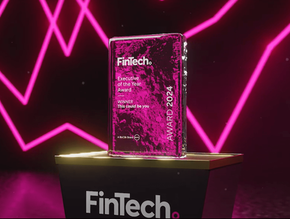Gen AI: Innovating the future of payments technology

Although most fintechs and financial services companies have had to shift their stance from unabated growth to consolidation amid difficult macroeconomic conditions in the past year, payments technology has well and truly bucked this trend.
Today, there is much to be excited about in the payments space. But the clamour and bustle around Generative AI is perhaps greater than for anything else.
Indeed, Gen AI has catalysed a new wave of innovation in payments technology – Finastra’s State of the Nation survey found the number of decision-makers at financial institutions who had improved or deployed AI capabilities over the last 12 months has increased from 30% in 2022 to 37% in 2023 at a global level.
It’s no wonder Finastra’s EVP of Payments, Barry Rodrigues believes “Gen AI and the use of Natural Language Processing (NLP) has leaped to first place ahead of other AI technologies, such as Robotic Process Automation and Machine Learning”.
Though we’ll delve into Gen AI in payments a little later, it’s worth noting other innovations drawing excitement too. For Peter O’Halloran, VP and Head of Enterprise & Digital Commerce (EMEA) at Fiserv, the pace of growth of unattended and SoftPos payments in the payment technology landscape is “genuinely exciting”.
“These innovations allow businesses of all sizes to untether payments from a fixed till and process transactions through smart devices such as unattended Pos units, phones and tablets,” he tells us.
Unattended Pos and SoftPos are indeed at the forefront of a revolution at the checkout, but it is not the only technology drawing attention.
Alan Irwin, VP of Product and Solutions Europe at Global Payments feels it’s biometric technology that will help drive the next generation of customer experiences.
He notes: “The successful deployment of biometric payment methods, such as through facial or fingerprint recognition will lead to great reductions in fraud, as well as enhance seamless authentication processes and tokenised payments that require no manual data input.”
It’s clear that technological innovation in payments is boundless today, and the future is set to remain a transformative one. But what is driving payments technology forward now? What is pushing tech firms to produce the next best thing in the world of payments?
Payments tech: The forces driving innovation
For Finastra’s Rodrigues, the key driver to evolving payments technology is the result of evolving customer expectations. “Consumers, businesses and all participants in the payments ecosystem increasingly demand faster, more convenient and secure payment methods,” he says.
“This demand has led to the development of innovative solutions that cater to the changing needs of users who now expect seamless and instant payment experiences.
“As a result, payment technology has needed to evolve to meet these expectations, offering faster processing times, user-friendly interfaces and enhanced convenience.”
Of course, consumer expectations are not the only external factor contributing to the rise of technology in payments, regulatory initiatives play their part too.
Jeroen Hölscher, Global Head of Payments Services at Capgemini, says: “Regulatory initiatives like tokenisation and directives like PSD2 and PSD3 have pushed the industry to adapt and innovate.
“Additional initiatives like the ISO 20022 migration, CBDC pilots and instant payment services are further catalysing the innovation process.”
What’s more, for Global Payments’ Irwin, a push to protect and support businesses from macroeconomic headwinds has added further fuel to the fires of innovation. “The primary driving force behind innovation in paytech is the push to support businesses by developing more efficient and convenient ways for their customers to pay,” he says.
“Merchants that want or need to increase their revenues and expand into new markets must have strong levels of customer loyalty, something that can be earned by providing consumers with quick, easy and safe payments experiences that are tailored to their specific preferences.”
While these directives and the push from consumers represent the will to innovate in payments, it’s internal changes at FIs and fintechs that have shown the way.
“Financial institutions are embracing cloud transformation for adaptable payment infrastructure, enabling innovation within the industry,” notes Hölscher.
“Composable architecture allows payment firms to shorten innovation cycles and improve time to market with an agile and configurable tech stack. And as more payment firms shift to SaaS-based composable architecture, we can expect payments innovation to pick up pace.”
Gen AI: The catalyst for a new wave of payments tech
With the right market conditions and technological infrastructures in place, Gen AI has now stepped in to take the possibilities for further innovations in payments technology to a whole new level.
For Fiserv’s O’Halloran, this is particularly true in areas of fraud detection and Know Your Customer (KYC) checks. “The advance of generative models will further enhance these processes,” he notes.
“For example, in fraud detection, AI aids call centers in effectively identifying fraudsters through real-time voice tone and language analysis. Additionally, in regulatory compliance, AI streamlines time-sensitive tasks like audits and KYC assessments, reducing the potential for human error.”
Gen AI appeals to consumer preferences too, says Global Payments’ Irwin. “We’re seeing that our customers want less human contact when it comes to digital onboarding to make the process more automated and seamless.
“They only want tailored assistance if an issue arises, and they’re not looking for lengthy and outdated help documents. AI’s ability to learn and adapt to specific situations makes it perfect for these circumstances.”
What’s more, the potential use cases for Gen AI in payments are only growing. Finastra’s Rodrigues tells us how it also automates and improves processes, “for example, automating invoice-based payment initiation”.
He continues: “Paper invoices and email attachments are still widely used by billers to get paid by their customers which typically involves typing bank transfer details from scratch, causing payment delays and errors.
“Powered by advanced Gen AI, solutions can automatically extract payment information from invoices, eliminating the need for manual data entry. Advanced machine learning algorithms are used to identify and correct errors in payment data.
“The solution automates many of the manual tasks involved in payment processing, such as matching invoices to payments and reconciling accounts.”
As more and more FIs and fintechs onboard Gen AI, the technology’s potential for further application only grows. It’s worth remembering too, that we are just at the beginning of Gen AI’s association with payments technology.
So, how could Gen AI shape the future of payments technology in the next 10 years?
The payments technology of the future
It goes without saying that, for most, 10 years is a long time. But in an ever-evolving payments landscape, a decade is a lifetime. Despite the timescale, we ask the experts how much they think payments technology will have evolved in that time.
Rodrigues gives us his take: “Within the next decade I think we’ll see a truly open payments landscape with monolithic applications moving to modular and containerised systems, with banks able to consume all aspects of their payment architecture and not be beholden to one provider.
“The advent of digital currencies and tokenised deposits will also drive efficiencies in cross-border and account-to-account transactions. We should also expect open banking to enable consumers and businesses to pay each other instantly via mobile apps, reducing the need for intermediary schemes that charge fees for debit transactions.”
For O’Halloran, there are myriad use cases in which Gen AI will come to define the payment technology of the future. “I can see payments being fundamentally disrupted again by technologies that don’t even exist yet,” he says.
“Today we’re in the biggest paradigm shift in paytech since the invention of the internet and the pace of change means that we cannot yet conceive of all of the products and features we will be able to create in that timeframe.
“Alongside this, new regulations to manage the financial safety and data privacy of citizens and financial institutions will evolve to try and keep pace with the new technological advancements that innovation will bring.”
So, while it is hard to comprehend the future of payments over the next decade, Capgemini’s Hölscher expects a shift in principles he sees today to continue throughout the next decade.
“Paytech today is all about extending value beyond the payment process itself,” he notes. Expecting connectivity to be a lasting theme, Hölscher believes paytech will keep “propelling connected commerce, acting as an essential bridge linking merchants and consumers, thereby simplifying the payments experience.”
“Collaborations between paytechs and banks, especially through open banking initiatives, will continue to expedite secure and cost-effective payments,” he adds, “by granting customers access to banking services and facilitating seamless connections between consumers and merchants.
“We’ll also see a continued shift to cater towards SMBs, as paytechs consolidate within the industry, directing attention towards tailored services and specific needs of different business sizes.”
With all these future considerations in mind, it’s clear that today, Gen AI is well and truly paving the way for a future where the scope for innovation in payments is endless.
**************
Make sure you check out the latest edition of FinTech Magazine and also sign up to our global conference series - FinTech LIVE 2024
**************
FinTech Magazine is a BizClik brand







